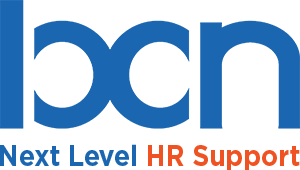As a business owner, you understand the importance of having effective HR solutions in place to support your employees and drive growth. However, managing HR tasks in-house can be a time-consuming and costly process. This is where a Professional Employer Organization (PEO) comes in.
A PEO, or Professional Employer Organization, is a company that provides comprehensive HR solutions to small and medium-sized businesses. By partnering with a PEO, businesses can streamline their HR processes and free up valuable time and resources. This allows them to focus on their core business functions while still providing their employees with high-quality HR services.
In this article, we will delve into the world of PEO pricing, helping you understand the costs involved and the value a PEO can bring to your organization.
Understanding PEO Pricing Models
PEOs offer different pricing models to accommodate the needs of various businesses. The two main pricing models are the “Per Check or Per Employee” (Unbundled) and “Burden Rate” (or Bundled) Pricing.
1. Per Check or Per Employee/Period Model (Unbundled) PEO Pricing Model
One commonly used PEO pricing model is the Per Check or Per Employee/Period (Unbundled) model. This pricing structure offers businesses the flexibility to pay based on the number of checks issued or the number of employees in a specific period.
How does it work?
Under the Per Check model, businesses are charged a fee for every payroll check issued by the PEO. This can be a fixed amount per check. The advantage of this model is that businesses only pay for the actual services used, making it a cost-effective option for companies with fluctuating employment levels.
On the other hand, the Per Employee/Period model charges a set fee per employee per pay period. This pricing structure allows businesses to have a predictable and consistent budget for their HR and payroll needs.
You have the option to select a percentage of payroll for an unbundled model, where the service fee is based on the gross payroll issued. This approach is particularly suitable for businesses with transient and part-time staff, such as restaurants and convenience stores, where the percentage is lower due to the lower gross wages.
Benefits of the Unbundled Pricing Model
The Per Check or Per Employee/Period (Unbundled) pricing model offers several benefits for businesses:
- Flexibility: With the Per Check model, businesses have the flexibility to pay only for the checks issued, which is particularly useful for companies with variable workforce requirements.
- Predictable Budgeting: The Per Employee/Period model allows businesses to anticipate and budget for HR and payroll expenses with certainty, as the cost remains fixed.
- Transparency: This pricing model provides transparency by clearly outlining the cost per check or per employee per period, enabling businesses to have a clear understanding of their expenses.
- Cost-effectiveness: The unbundled pricing model ensures that businesses only pay for the specific HR and payroll services they utilize, resulting in cost savings compared to traditional models.
Considerations
While the Per Check or Per Employee/Period (Unbundled) pricing model has its advantages, it is important for businesses to consider the following factors:
- Company Size: Depending on the number of employees and payroll checks issued, businesses should evaluate which pricing structure aligns better with their size and needs.
- Fluctuating Workforce: If the company experiences frequent changes in its workforce, the Per Check model may be the more suitable option, allowing for more flexibility in managing costs.
- Long-term Stability: For businesses with a stable and predictable employee count, the Per Employee/Period model may provide the convenience of consistent pricing and budgeting.
Unpacking the “Unbundled” Pricing Model
The Per Check or Per Employee/Period (Unbundled) pricing model offers businesses the flexibility and cost-effectiveness to tailor their HR and payroll expenses based on their specific requirements. By understanding the advantages and considering the factors that influence the choice between the two pricing structures, businesses can make informed decisions that align with their needs and budgeting preferences.
The per-employee model is based on a cost-per-headcount basis. Businesses are charged a specific fee for each employee they have, which covers the cost of the HR services provided by the PEO. This model is particularly beneficial for businesses with fluctuating or seasonal staffing needs , as they only pay for the HR services they actually use. The per-employee model allows businesses to scale their HR services up or down as needed, providing flexibility and cost-efficiency.
2. Burden Rate or Bundled Pricing Model for PEO Pricing
Another common PEO pricing model is the Burden Rate or Bundled Pricing model. This model consolidates various HR services into a single bundled cost, known as the burden rate. This comprehensive pricing structure is designed to simplify the billing process and provide businesses with a holistic HR solution.
How does it work?
Under the Burden Rate or Bundled Pricing model, businesses are charged a fixed percentage of their total payroll costs to cover a range of HR services. The burden rate typically includes expenses such as payroll taxes, workers’ compensation insurance, employee benefits administration, and compliance management.
Rather than paying separate fees for each individual service, businesses pay a single bundled cost that encompasses all of these HR solutions. This allows for predictability and streamlines the billing process, making it easier for businesses to manage their HR expenses.
Benefits of the Bundled Pricing Model
The Burden Rate or Bundled Pricing model offers several benefits for businesses:
- Simplified Billing: With the bundled pricing structure, businesses receive one invoice that covers multiple HR services, reducing administrative hassle and simplifying the payment process.
- Comprehensive HR Solution: The bundled pricing model provides access to a wide range of HR services, including payroll taxes, employee benefits management, top-tier retirement plans, and compliance assistance. This comprehensive solution ensures that businesses have all their HR needs met in a single package.
- Cost Predictability: By charging a fixed percentage of total payroll costs, the burden rate offers businesses cost predictability. This makes it easier to budget and plan for HR expenses, as there are no unexpected or fluctuating fees.
- Time and Resource Savings: With bundled pricing, businesses can save time and resources that would otherwise be spent on managing multiple vendors or tracking individual service fees. This allows business owners and HR teams to focus on core business activities.

